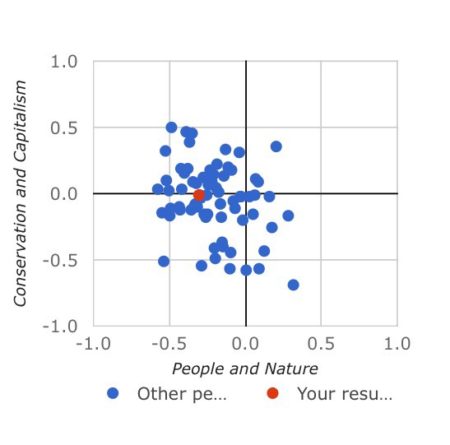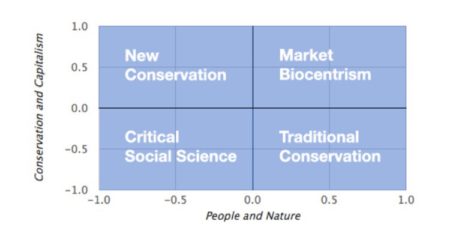Although discussions about the aims and methods of conservation probably date back as far as conservation itself, the ‘new conservation’ debate as such was sparked by Kareiva and Marvier’s 2012 article entitled What is conservation science?
Two prominent positions have emerged in this debate, that of Kareiva and Marvier, which we label ‘new conservation’ (top-left quadrant of the figure below), and a strongly opposed viewpoint that we label ‘traditional conservation’ (bottom-right quadrant).
These positions can be clearly distinguished by their views on nature and people in conservation on the one hand, and on the role of corporations and capital in conservation on the other hand (the two axes in the figure).
Want to know which quadrant you fall into? Take the survey.
I did, and this is what I got.

Which basically means I’m wishy-washily neutral (agnostic? conflicted?) on the role of the private sector, and apparently think conservation needs to show some benefit for people, in particular poor people. And in that it seems I’m pretty near the centroid of opinion, at least when it comes to the last 100 people who took the survey. Of course, this is for biodiversity conservation. I wonder if the results would be different for conservation of agricultural biodiversity.
